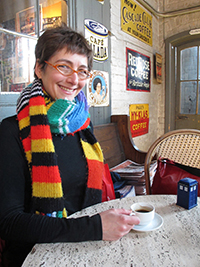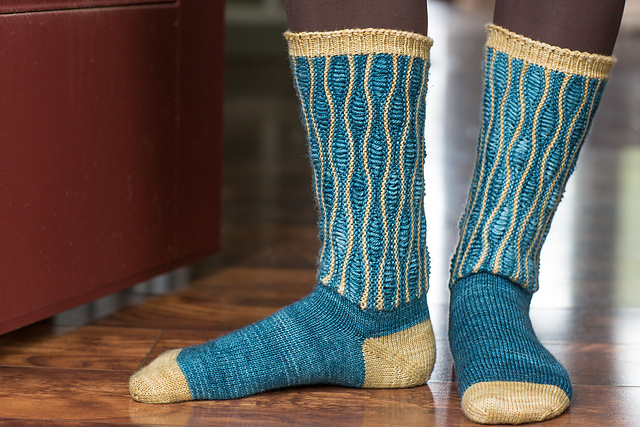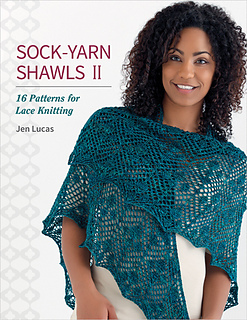Welcome to the 4th day in our week of 5: 5 designers, 5 socks, 5 interviews, all to highlight Sockupied Spring 2015, published last week in a new PDF format. On Monday I interviewed Amy Palmer, editor of Sockupied. On Tuesday we featured Kate Atherly, and on Wednesday MK Nance.
Today we have Mone Dräger, who (like many of us) was also taught to knit by her grandma. Mone is located in Germany, and many of her patterns are both in English and German! I’m simply in love with Mone’s socks, which were featured in Sockupied’s “One Sock, Two Ways”.
 |
| © Sockupied/Harper Point |
German pattern I still knit from it nowadays. I admit that I prefer English knitting patterns, simply because I like that there is an English ‘knitting language’. There are lots of abbreviations like ‘ssk’ or ‘k tbl’ – very short and commonly used and they mean the same for all knitters. In German many things have to be described with lots of words – don’t even ask me for a short form of ssk – and in addition there are no common abbreviations. Different publications use different ways to express the same thing.
When I work on a new pattern my notes are usually in ‘denglish’, a mix of German and English where I use German to explain certain design features but use English terms for all the instructions. I write all my patterns in English first, and then translate them back to German. Even though it should be easy for a native speaker I often run into trouble because I’m much more familiar with English terms.
Snowdrops. Funnily enough, even though I knit a lot of warm and winterish things, I’m a summer loving person and I’m always a happy camper when the often grey and wet German winter is over, so to see the snowdrops coming out for sure puts a smile on my face. Tells me that spring is not too far away and warmer weather should be here soon.
Ponderosa Wolle: I went to a crafts fair two weeks ago and had the chance to see all her beautiful yarns in person. And ahem, I might have bought some. A lot. And most of them variegated yarns. Nothing better than colours as a cure for grey and dull days.
Hannover 96: My local soccer team and we’ve got season’s tickets and go to the stadium to watch them play every second weekend. It’s always a blast with all those people in the stadium, singing, clapping and cheering them on and well, if they even win it’s perfect entertainment.
Ravelry and my friends there: I often say that my knitting friends know me better than my family and although that’s an exaggeration, it’s wonderful getting to know and chat with people who share the same hobby. Isn’t it terrific how small the world became thanks to the internet?
Holidays abroad. We are just planning our summer holidays and it’s very likely we’ll go to England and Ireland again. We’ve done that before and usually we go by car and just stay wherever we like it. This time we plan to go end of June, so maybe I’ll even go to Woolfest? Not to forget that I’ve got Ravelry friends in the UK too, who I hope to meet.
Mone Dräger’s Socks are titled Chains Socks, so titled because of the distinctive slip-stitch pattern. Mone was inspired by the bridges of the West Coast on her summer holiday in the US – can you see the lines of the bridges in the socks?
 |
| © Sockupied/Harper Point |
The green version of Mone’s socks are worked in Huckleberry Knits Willow in the colorway titled
North Fork, the variegated socks are in Mercado. I love how the two yarns create such distinctive effects – both completely different but just as stunning. Huckleberry Knits has generously offered up a skein of Willow to the winners of one of the prizes!
To enter the contest, use the Rafflecopter widget below! You can enter the contest multiple times by doing different things – so have fun with it. We will have three winners to the drawing, be sure to scroll through and see all the great prizes!
































